Combat aircraft. Goering's envy
Halifax, Stirling and Lancaster are the trinity that spoiled a lot of blood on their opponents during both World War II and after it. Our hero, Halifax, ended his combat career in 1955, serving in the Pakistani Air Force. Of the 6176 Halifaxes of various modifications launched into the sky, 1833 aircraft were lost. Battle knight.
It all started in the mid-30s of the last century. Handley Page, which made its mark during the First World War, continued to work for the RAF as a designer and manufacturer of bombers. Aircraft such as Hyderabad, Hinandi, Hayford and Harrow were built and adopted by the firm. The latter even lasted until the outbreak of World War II, but was not used as a bomber.
And our hero was developed as a replacement for the Armstrong-Whitworth aircraft, which entered history like Wheatley.
It was supposed to be an aircraft capable of carrying 1814 kg (we will not consider in pounds we are not used to) bombs at a distance of about 2400 km at a speed of more than 300 km / h at an altitude of 4500 m.In addition, the wingspan should not have been more than 30 meters, so that the aircraft can use standard Air Force hangars.
The British, unlike aircraft manufacturers in many other countries, did not bother with the choice of engines. There were plenty to choose from: Bristol "Hercules", Rolls-Royce PV-12 (which will become "Merlin") and Armstrong-Siddley "Deerhound" V. Each of these three engines produced about 1000 hp. with., which was more than enough for a bomber at that time.
Initially, the aircraft was a twin-engine, a pair of Hercules HE-lSM engines accelerated the HP.55 prototype to a speed of 404 km / h. It was quite fine, but the bomb load and range with bombs did not correspond to the terms of reference. The armament was also weak, one course machine gun, one in the upper turret, two machine guns in the rear turret. Naturally, the machine guns were 7,7 mm.
In general, the medium bomber from HP.55 turned out to be not very good and lost to the product of the "Short" company. In 1936, the HP.55 project was converted to HP.56, which met the requirements of the P.13 / 36 specification for a heavy bomber.
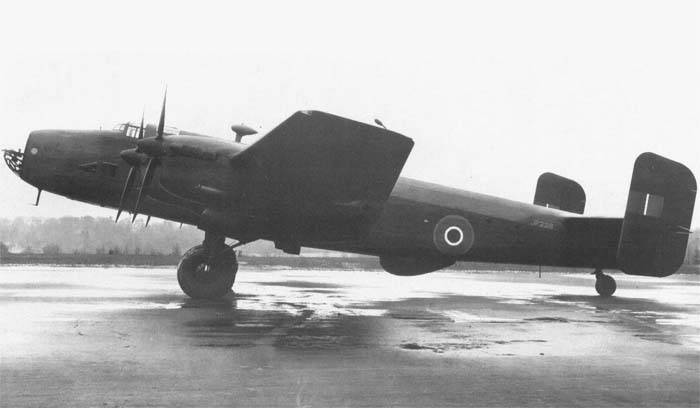
The power plant consisted of two Rolls-Royce Walcher motors, each of which in turn was a twin Kestrel motor on one crankshaft. The wing was raised higher and a single bomb bay was made, which could accommodate 16 bombs of 227 kg each, or four armor-piercing bombs of 907 kg, or two torpedoes 5,56 m long.
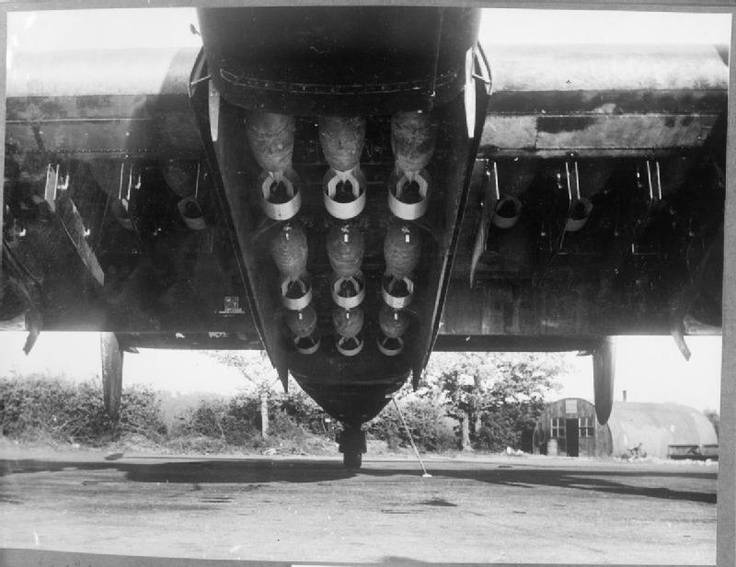
In addition to bombs, the armament consisted of two turrets, nose and tail, with two and four 7,7-mm machine guns.
The aircraft's crew consisted of two pilots, one of whom was navigator, bombardier and front gunner; radio operator and rear gunner.
Meanwhile, the Walchers were delayed, and the designers began to consider options with two Hercules or four engines Bristol Pegasus, Bristol Taurus, Napier Dagger or Rolls-Royce Kestrel.
True, none of these options looked attractive, since the two motors on the wing weighed more than one Walcher, moreover, they required more fuel and oil, and they created more drag.
In 1937, the idea arose to try four Merlin Xs, with a capacity of 1010 hp, instead of two Walchers. each. "Merlins" were very narrow, therefore they created little resistance and were able to provide the necessary flight characteristics.
The first flight of the Halifax took place on August 17, 1940.
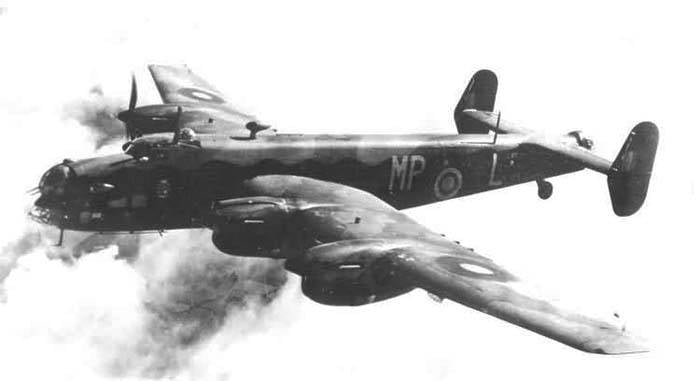
The first prototype was unarmed, the second was already equipped with a Bolton-Paul Type C turret with two machine guns in the nose and a Type 1 turret with four machine guns. The maximum take-off weight reached 25 tons. But it became possible to retrofit the bomb bay with additional bays for 6 bombs, 227 kg each, or two fuel tanks, 1046 liters each. In addition, two 364 liter tanks could be installed in the crew rest compartment. In total, this significantly increased the standard fuel supply (6 liters) and flight range.
In the series "Halifax" was designated as HP.59. Under this designation, he went to the series and, accordingly, to the troops.
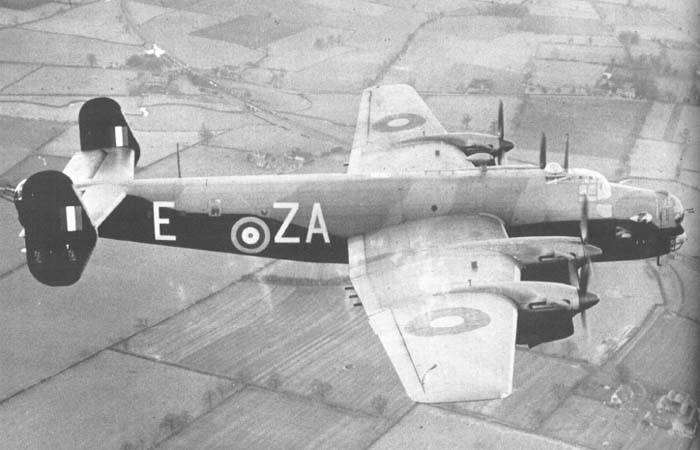
The first combat use took place in March 1941. By that time, the Bomber Command had 8 Halifaxes at its disposal, 6 of which were sent to bomb the docks and the canal in Le Havre. The Halifaxes were successfully bombed, all 6 returned, and already over Britain one plane was shot down by its own fighter unknowingly.
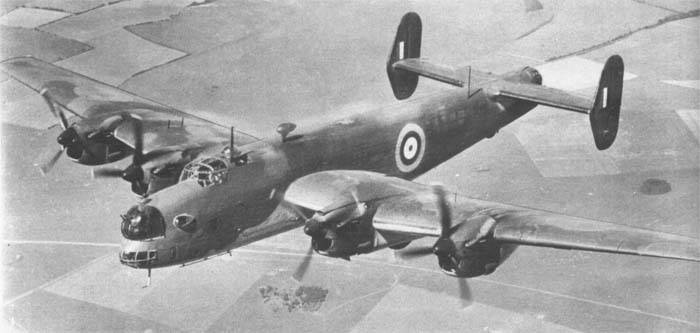
The combat test was considered successful, and as the crews were trained, the Halifaxes began to be used more and more, gradually beginning to supplant the Whitley. Most of the aircraft were used at night, although there were cases of daytime use. For example, on the afternoon of July 24, 1941, a group of aircraft, which included 15 Halifaxes, attacked German ships in the port of La Palis, including the battleship Scharnhorst. 5 aircraft were lost and 7 were seriously damaged: the German anti-aircraft gunners knew their business.
2 more aircraft were lost in the raid on Kiel, in which 6 Halifaxes took part, after which British bombers stopped flying on such missions during the day.
The combat use of "Halifax" revealed several weaknesses, one of which was the chassis design. The planes had problems landing. The reason for this was the equipment of the aircraft with cast parts in the landing gear system instead of forged ones.
And of course, defensive weapons were the weak point.
But the "Halifaxes" were liked by the flight units and the aircraft began to be built in decent quantities. In 1943, productivity exceeded 130 units per month, and 1944 became a record year, when more than 200 cars per month were produced in the first half.
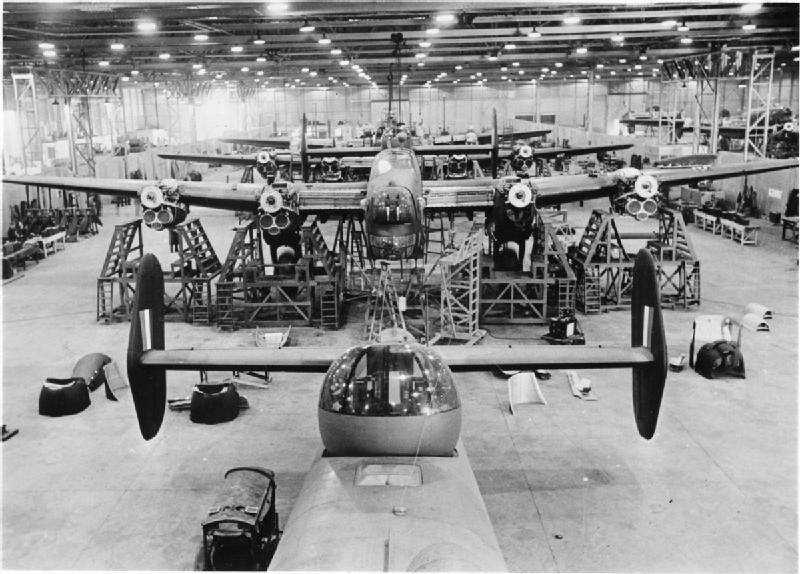
Halifaxes were used on all fronts. They bombed the Scharnhorst and Gneisenau in Brest, looked for the Tirpitz in the Norwegian fjords, in March and April 1942, the Halifax tried to "get" the 454-kg battleship with mines, but to no avail. Of the 34 aircraft, 6 did not return back.
In April 1942, a new British bomb weighing 3 kg was tested on the Halifax. This happened during the raids on Essen.
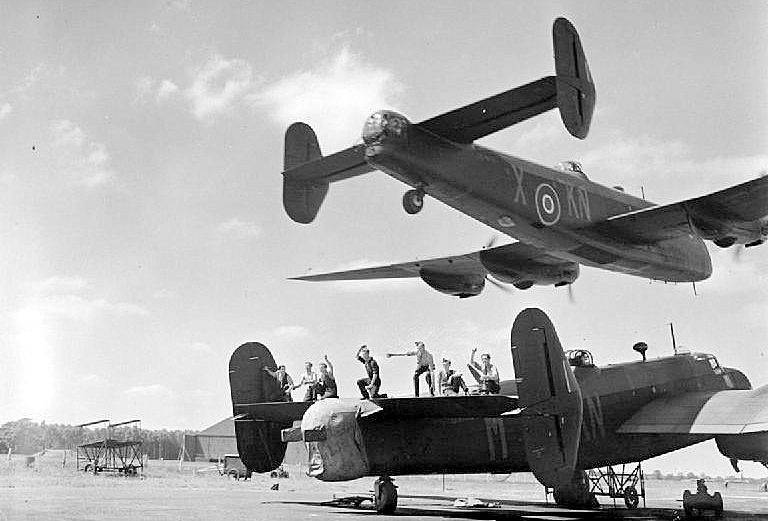
Halifaxes became regular participants in the "raids of 1000 bombers". The first raid on Cologne involved 118 Halifaxes, of which only 4 were lost. In June 1942, Halifaxes flew to bomb Essen and Bremen.
And in Africa and the Middle East, "Halifaxes" generally became both the first and only heavy four-engine bombers operating against the Germans and Italians. In July 1942, Tobruk became their constant night target, but the effectiveness was rather low, since the crews were not trained for combat in the desert.
In parallel with its direct responsibilities, "Halifax" during the war also mastered a related specialty: aircraft for special operations.
The lower hatches of the planes were altered for the discharge of cargo containers, and three squadrons, manned by Polish crews, began regular supply from November 1941. weapons and ammunition of the Home Army units. The Halifaxes, which had to fly 3200 km in an incomplete load, coped with this task quite well, despite the fact that the raid to Poland and back took about 14 hours.
In 1942, similar squadrons were created and operated in the interests of resistance in France, Greece and Yugoslavia. Later, the Liberators joined Halifax in this field, but Halifax laid the foundation.
During such operations, which quite naturally took place at night, the crews flew in reduced numbers in order to take more cargo. Usually the crew was reduced to 4 people: two pilots, a navigator and a person responsible for dropping the cargo.
For aircraft performing special operations, a nose cone without a turret was designed, which significantly improved the aerodynamics of the aircraft. Later this fairing, called the "Tollerton fairing", began to be installed on conventional bombers.
In general, there were a lot of experiments with the defensive weapons of the Halifax. Especially in this they succeeded in the Coastal Command, where "Halifaxes" also arrived in decent quantities. The bombers have mastered the role of an anti-submarine patrol aircraft capable of operating in the Bay of Biscay and the near Atlantic.
Three tanks of 1046 liters each in the bomb compartment provided the necessary range, even if they took the place of anti-submarine bombs. The large compartment allowed the installation of the ASV Mk.III radar. 13-18 hours of flight, radar and depth charges - it was a good combination for an anti-submarine patrol aircraft.
7,7-mm machine guns were replaced by 12,7-mm "Browning", which made it possible to fire at lightly armored ships. The large-caliber configuration looked like this: one Browning in the bow, two each in the upper and tail mountings.
The PLO Halifaxes were very successful. The sinking of 7 German submarines by two Halifax squadrons based on Gibraltar has been reliably confirmed.
An attempt was made to create a high-altitude bomber based on Halifax. It was the project HP.61 for engines Bristol "Hercules" VII or high-altitude modifications of "Merlin". These motors had two-stage superchargers and performed well at altitudes over 9 meters.
For high-altitude flights at Heidley Page, they planned to increase the wing area, upgrade the bomb bay to accommodate large-caliber bombs, return the retractable tail wheel and install new machine-gun turrets. The new version of the bomber went into production in February 1944 as Halifax III.
Halifax III turned out to be in fact not so high-altitude as a versatile aircraft capable of performing various missions. These aircraft were used by the squadrons of the Bomber, Coastal and Transport Commands. Several Canadian squadrons also received Halifax III.
By the end of the war, the Halifaxes were a very important component of the Bomber Command, although they were somewhat inferior to the Lancaster, which took more bombs and carried a little further.
Night raids on Germany performed by Halifax and Lancaster became something commonplace, and only in 1945, when the Luftwaffe practically ceased resistance, British bombers began to fly during the day.
Here "Halifax" mastered another specialty, electronic warfare. Two squadrons and one special-purpose flight carried the Mandrill complexes on board the Halifaxes, which disrupted the work of the German early warning radars. A number of aircraft were equipped with the Erborn Cigar system, which suppressed German radiotelephone channels.
At the end of the war, the Halifaxes were again useful as transport aircraft. As an airplane for airborne assault "Halifax" was not very suitable because of the inconvenient design of the bomb compartment, then all the work fell on the "Stirling", but as a towing glider "Halifax" was indispensable.
The aircraft participated in Operation Mardi Gras and Freshman in Europe, Tiger Force against Japan, in general, Halifax was the only British Air Force aircraft capable of hauling the Hamilcar transport glider, capable of carrying even Tanks.
From 1943, Halifax became a regular glider towing vehicle in the RAF and participated in all operations involving gliders.
The re-equipment was minimal: the upper turret was dismantled, a hook for a towing cable with a release mechanism was installed behind the tail wheel, places for 12 parachutists and a special lower hatch for dropping cargo could be equipped inside the fuselage. The floor was reinforced, and rails were installed on it, along which 12 freight containers moved. Two winches were installed to retrieve the lines.
Airborne assault aircraft received A.
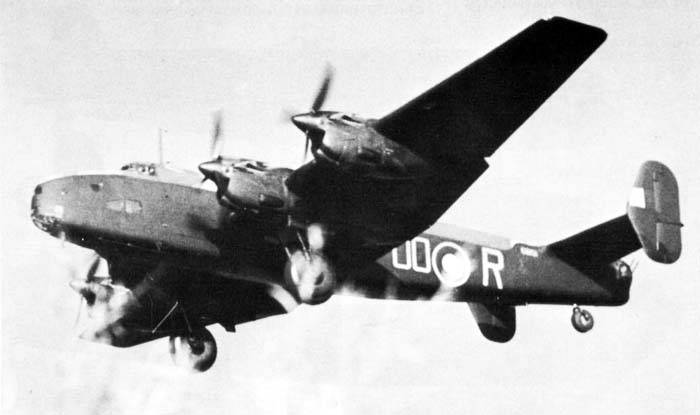
Thus, 257 aircraft were converted into models A.III and A.VII, and 145 aircraft of model A.IX.
After the war, Halifax continued to be used as a cargo and passenger aircraft. Maintainability and reliability made it possible to do this. Of course, as a passenger airliner, this plane was not convenient, its internal volumes allowed to accommodate only 8 passengers, but as a transport plane, Halifax turned out to be very useful.
The result of the Halifax service can be considered 82 sorties, as a result of which 773 tons of bombs were dropped. In fact, this is almost 224 bombs weighing 000 kg.

In the title of the article, "Halifax" was called the envy of Goering. In general, this could be said to the address of any aircraft from the British four-engine trinity: Halifax, Stirling, Lancaster. These were indeed aircraft that Germany did not possess either at the beginning of the war or at the end. And which the Luftwaffe clearly lacked.
Of course, if the Germans were able to organize the production of "Kondors" at least on the scale of the most unfortunate of the three, "Stirling" (2382 pcs.), Then the alignment could be different.
However, the Luftwaffe did not have 15 thousand four-engine bombers, but the Royal Air Force did. And so the German industry was forced to work, constantly receiving air strikes.
In this regard, Halifax was slightly inferior to Lancaster, but nevertheless, it was an impressive tool for inflicting damage.
LTH "Halifax" B.Mk VII
Wingspan, m: 31,75
Length, m: 21,82
Height, m: 6,32
Wing area, м2: 118,45
Weight, kg
- empty aircraft: 17 345
- normal takeoff: 29 484
Engine type: 4 x Bristol "Hercules" XVI x 1615 hp
Maximum speed km / h: 454
Cruising speed, km / h: 346
Practical range, km: 3 840
Combat range, km: 1 658
Practical ceiling, m: 7 315
Crew, prs: 7
Armament:
- one 7,7 mm machine gun on a movable mount in the bow;
- four 7,7 mm machine guns in the dorsal turret;
- four 7,7 mm machine guns in the tail turret.
Bomb load up to 5 897 kg
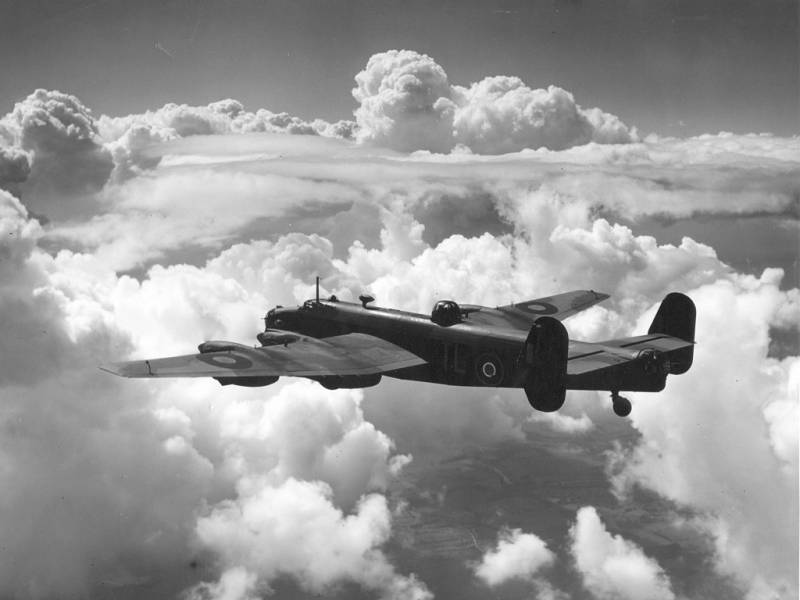
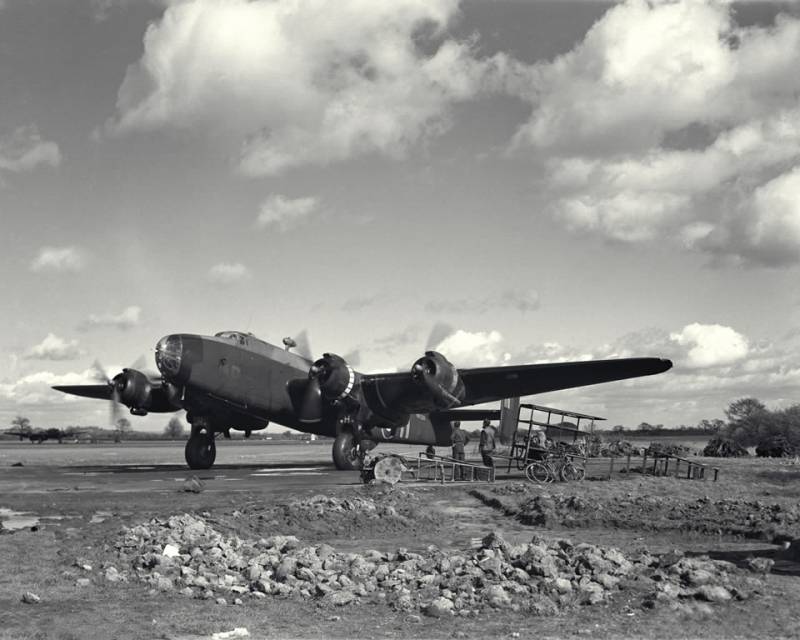
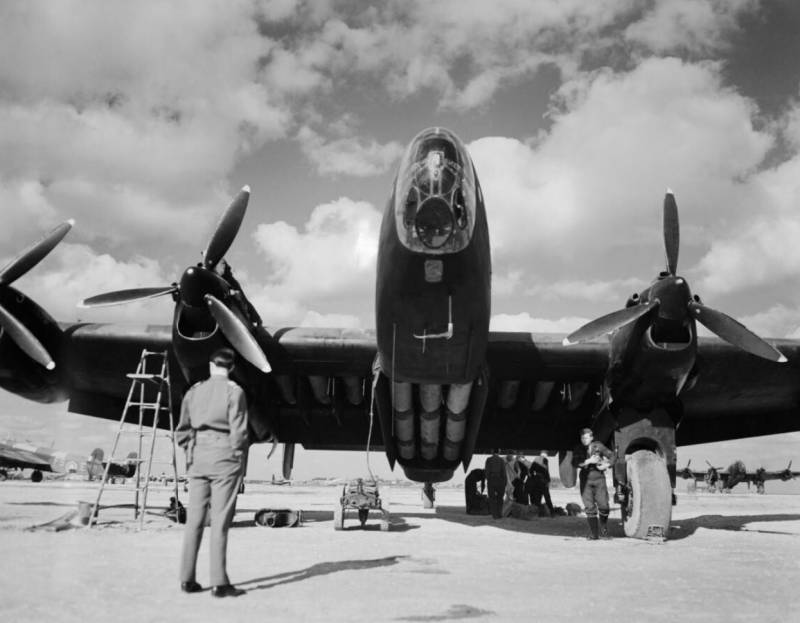
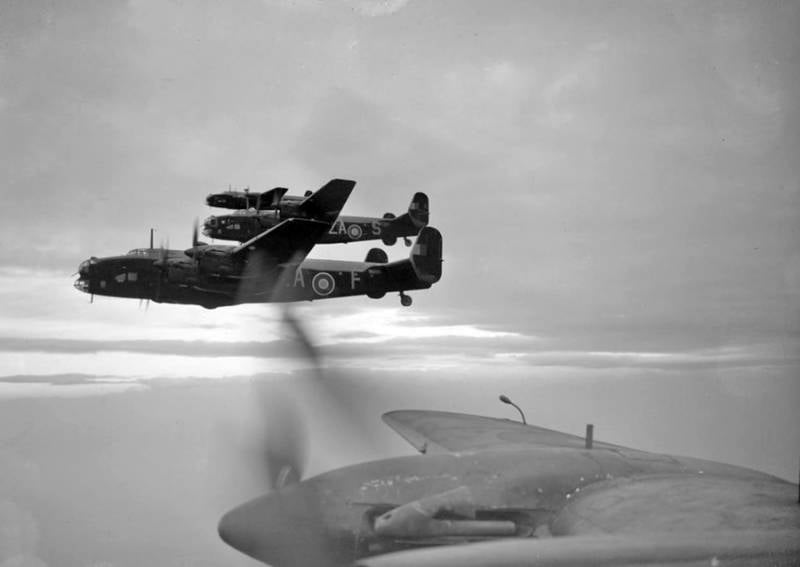
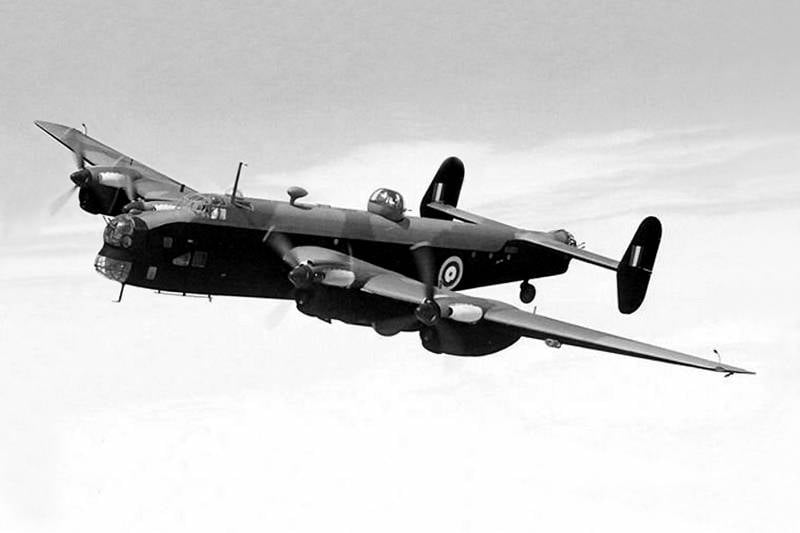
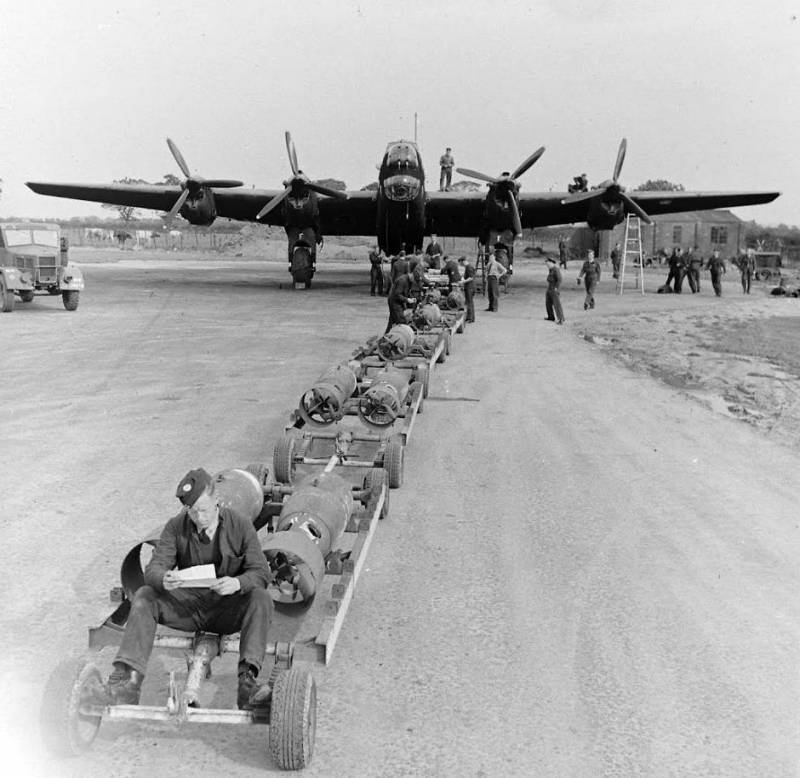
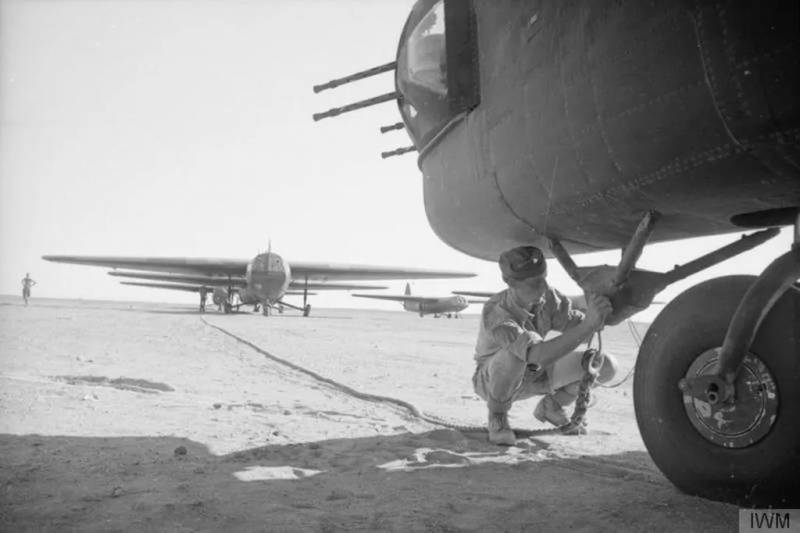
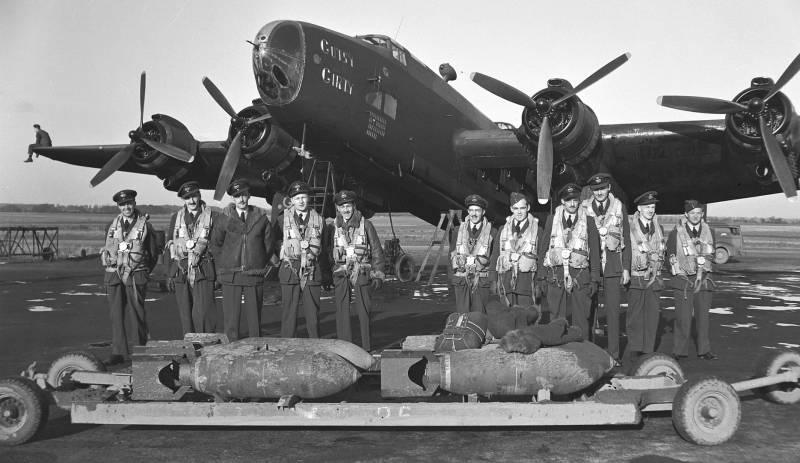
Information